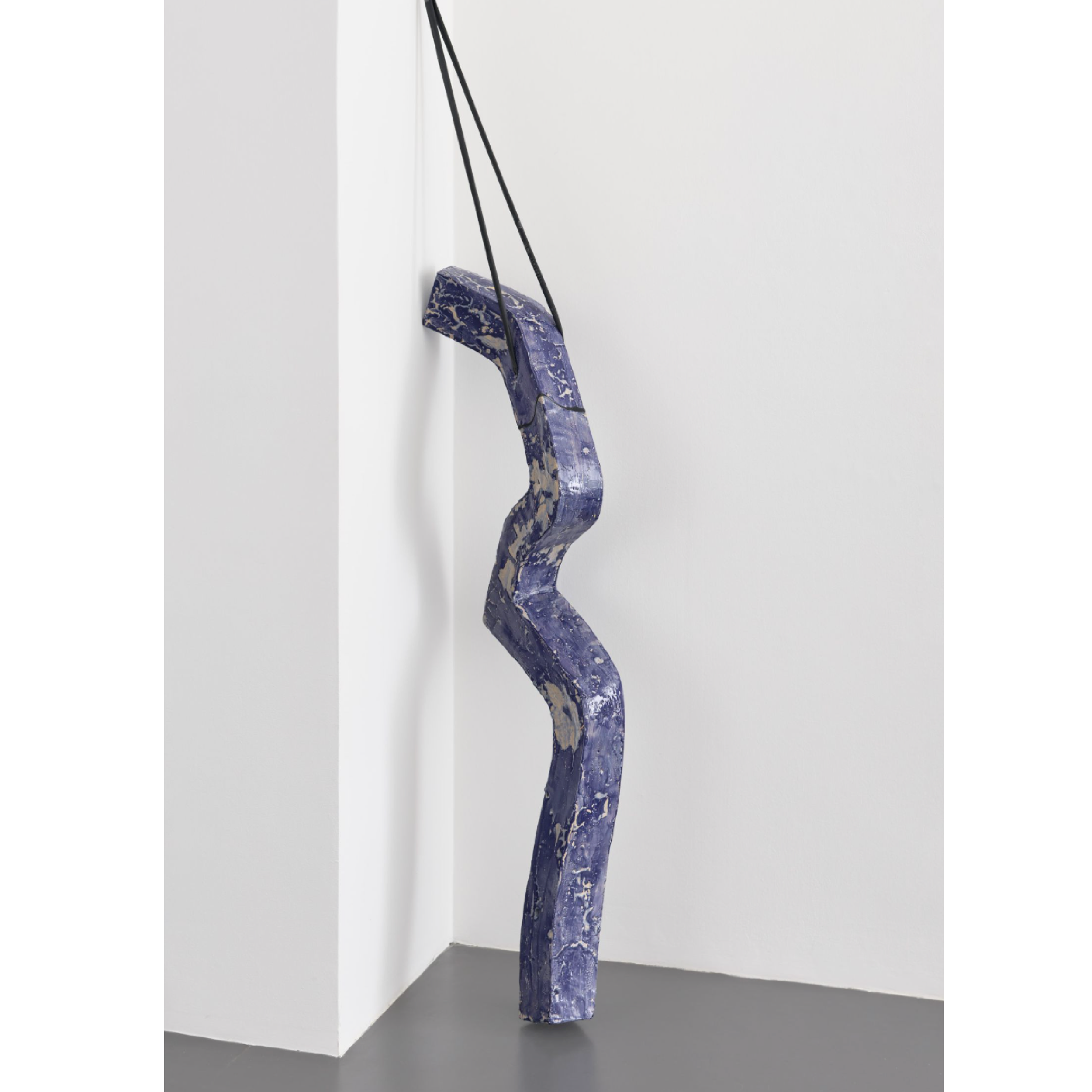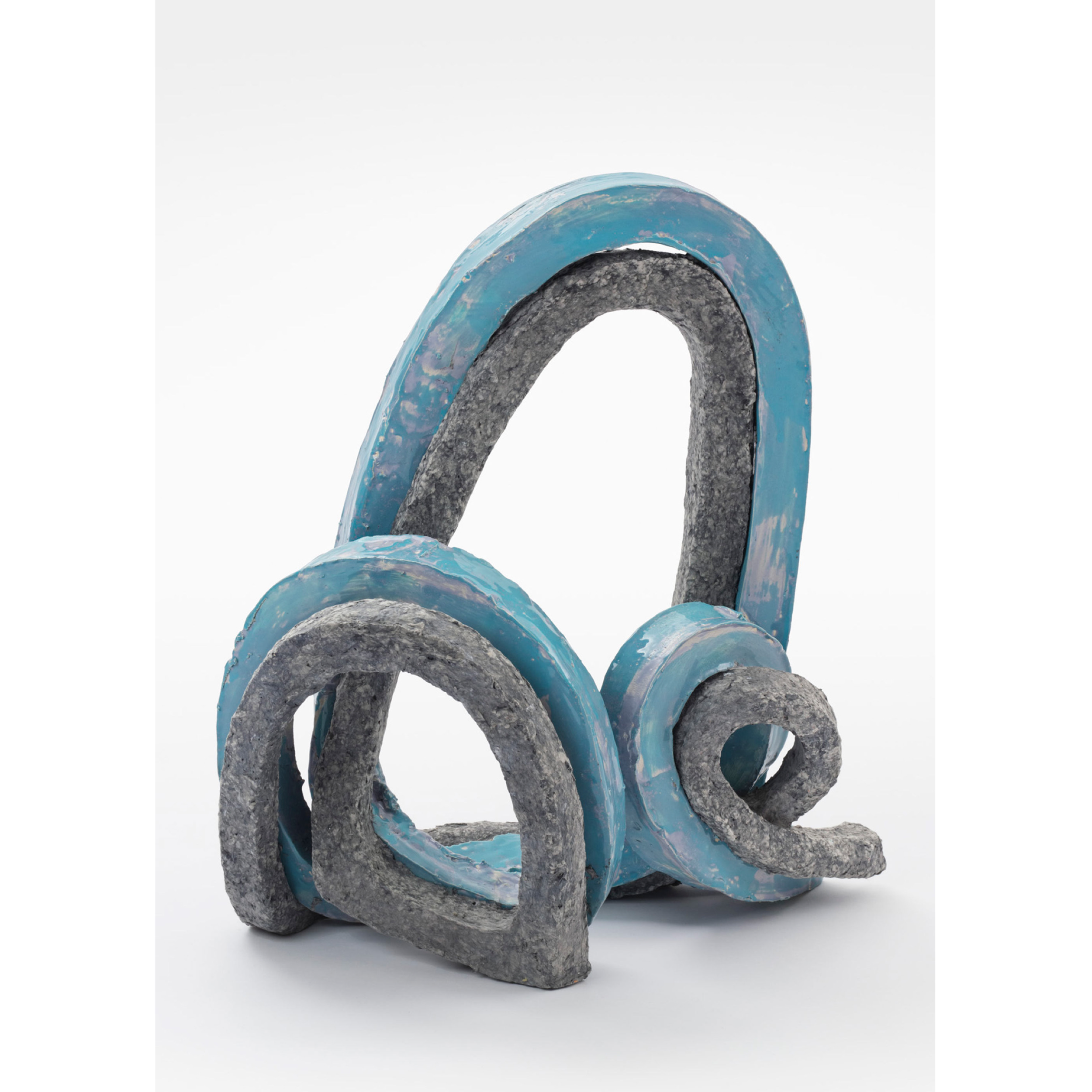Lisa Tiemann | 19.05.2023 - 11.08.2023
Lisa Tiemann (* 1981) uses form, materiality and colour in her sculptural work to address universal questions. Her creative process is motivated by philosophical inquiry that resonates in her work and leaves a personal fingerprint. Instead of searching for definite answers and creating a static sign system she is interested in challenging existing paradigms that attribute a constant value to all things. The underlying theme of her work is the volatile relationship between form and meaning. In this sense her sculptures are snap-shots demonstrating a momentary status quo within a dynamic environment.
The series Couples centres on the relationship between two elements of different materiality. The artist outlined a series of basic forms that she translated into respective sculpture couples. Each one consists of one clay and one paper object that have joined together both taking on the same predefined form. While the two elements are closely nestled together and can be perceived as a unity they remain separate entities. The space between the two elements is where attracting and rejecting forces generate creative friction and where balance can be manifested. Tiemann’s chosen forms do not appear as constructed or complete poses but rather represent a transitional position within a continuous course of movement. The elements have a subjective quality and seem to have bent and stretched themselves into their position of their own accord. While Couples is an independent series it is also deeply embedded in the artists overall body of work.
Some of Tiemann’s sculptures are based on simple geometric forms and others are much more complex three-dimensional drawings. A singular symbol such as a circle evokes very fundamental concepts while her more gestural works in contrast have an almost narrative quality. The sculptures are presented on pedestals, mounted to the wall or extended into space.
Tiemann currently uses ceramic as her primary material. It lends itself to a primitive creative process in which the artist’s hands become the form-finding tools. The starting-point of each sculpture is a long tetragonal line of clay that the artist bends, loops and knots according to the form she has in mind. Little imperfections and marks left on the clay remain as traces of the artist’s influence.
Although frozen in form, Tiemann’s sculptures convey a fragile balance that suggests impending change. While the completed artworks embody the lightness and fluidity of Tiemann’s process-orientated approach they require diligent planning and supporting structures before the clay is fired. The coloured glaze applied in the second step has a major effect on the perceived materiality of the sculpture which can take on a permeable warm and heavy quality or seem reflecting and cool.
Tiemann often combines ceramic elements with other materials such as latex, steel or paper. These contrasting materials form a sculptural unity and amplify the importance and scope of materiality in her work.
- text by Erika Riesenkampff (2016) -
ARTIST PORTRAIT
Absurdity and comedy are inherent in the ceramic works of Lisa Tiemann (*1981). By an uncompromising confrontation with the chosen material she is able to reveal a new and unusual language of forms.
The sculptures attained in this way remain fragile and process-oriented. Painted clay is an important material in Lisa Tiemann’s artistic practice. Far from the usual practical value of ceramics, the material takes on new shapes. We find it stretched und curved into elongated, thin and tetragonal rods. The sculptures bring three-dimensional drawings to mind. Their line is freely drawn and yet their materiality manifests through an arrangement in space.
Tiemanns coloured sculptures are shimmering loops, circles and knots, which are placed on pedestals, mounted to the wall or hung into the exhibition space. The supporting structures are made of metal cords or bent iron pipes that have a certain brute force.
Wooden pallets are also used to present the sculptures and at the same time they form part of the spatial interventions. The predominant material, clay, is also combined with latex tubes, whose weight visually contradicts the ceramics and is partly used illusionary by Tiemann. Contrasting the ceramic bodies, the partly supporting, partly hanging latex elements emphasize the effect of gravity. As a result the floating lightness is accompanied by an impression of tension and weight.
The discrepancy between material and statics in Tiemann’s work causes disturbances in the production process so that originally targeted forms do not remain permanent. The constant experience of failure was therefore addressed in some of her earlier works. Tiemann’s ceramics refuse definite and final solutions of the form finding procedure and by doing so are questioning the teleological understanding of sculpture as an expression of the artist’s intention.
Furthermore, she devotes herself to an undesirable material: Clay is generally associated with a housewife’s attempt to develop creativity or brought into connection with primitivistic forms of expression in the arts. Tiemann succeeds to free the material from these connotations. She produces forms which seem to defy the power of attraction.
- text by Sophia Gräfe (2015) -




